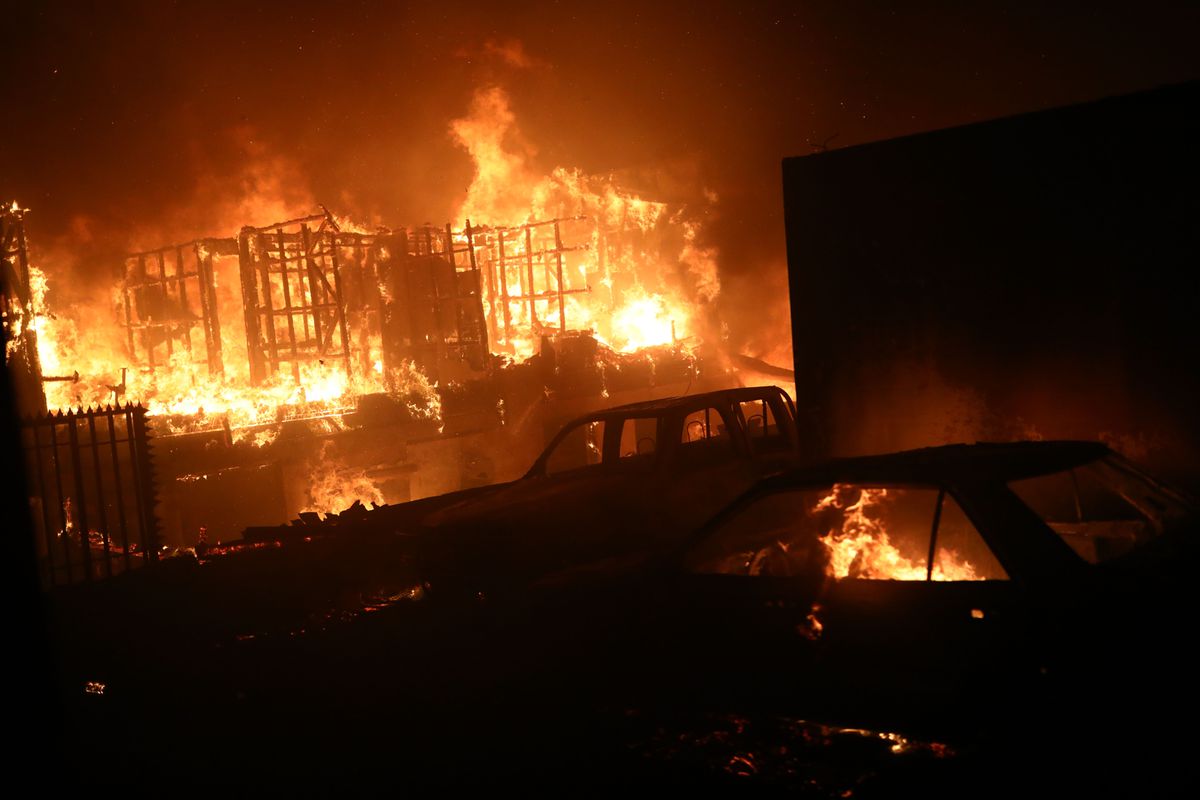EL PAÍS offers the América Futura section openly for its daily and global information contribution on sustainable development.
If you want to support our journalism, subscribe
here
.
In addition to being a catastrophe that took 132 lives, 7,000 homes and left more than 29,000 hectares in ashes, the forest fire that occurred during the first days of February in the south-central area of Chile, in the Valparaíso region, sowed many questions.
How did you get to that stage?
Why was it so lethal, even becoming the deadliest in the world since the one in Australia in 2009?
Can climate change be targeted?
What went wrong?
Although it usually takes science longer to answer these questions, a study published by the
World Weather Attribution
(WWA) initiative is already beginning to unravel some of these answers.
Conducted by 20 scientists, including experts from Chile, Brazil, Colombia, the Netherlands, Germany, Sweden and the United Kingdom, the research concludes that the meteorological conditions that favor fires will become more intense with climate change, which , added to the poor use of land, will make some regions of Chile more vulnerable to fire.
“What we usually answer at WWA is what role climate change plays in extreme events,” Professor Friederike Otto, founder of WWA and co-author of the study, commented in a press conference.
“Fires have many causes and, for the specific area studied [near Viña del Mar, where the fires occurred], we found that climate change and soil management can increase the risk of fire,” he recalled, adding that, although This study is not peer reviewed, the methodology they used was.
Which allowed them to provide the results in almost record time.
To find out the first thing – the role that weather conditions had in the fire – the team used an index that adds three variables that lead to a greater danger of fire: high temperatures, high wind speeds and low humidity.
Thus they found that, under current conditions, where the world temperature has increased 1.2°C compared to the pre-industrial period, a fire like the one that happened in early February in Chile is expected to recur once every 30 years.
And as pointed out by another of the authors, Joyce Kimutai, researcher at the Grantham Institute of Imperial College London (United Kingdom), although everything indicates that climate change has not yet generated a statistically significant impact on these three variables, it is expected that, under an increase in global temperature of 2°C, it will do so, making the situation more extreme and “increasing the danger of fires.”
In Chile, according to the National Forestry Corporation (Conaf), more than 99% of forest fires are due to human negligence.
However, Kimutai says, temperature, winds and humidity contribute to the fire spreading faster.
Volunteers fight a forest fire in Santa Rosa de Colmo, Valparaíso, in 2022.VINA DEL MAR FIREFIGHTERS (REUTERS)
As to why, so far, there does not seem to be an impact of climate change on these three variables, the authors assure that there is a kind of “dispute” with other conditions.
“In recent decades, the central part of Chile has suffered a strong contrast between the cooling that occurs at the coastal level, and the warming that exists in the interior due to climate change,” explained Tomás Carrasco Escaff, researcher at the Climate Research Center. and Resilience of the University of Chile.
He refers to a phenomenon known as the South Pacific Anticyclone, which causes cold waters to arrive along the central and southern coast of Chile, which means that the heat effect generated by climate change can be compensated in some way. .
But it is a situation that will not be constant.
That is why researchers fear what may happen in the future.
They reiterate, again and again, that in a warmer world the risk of fires like those in February will be more likely.
Vulnerability, planning and science
“In Chile, fires have always been a critical danger,” added Mauricio Santos Vega, from the Climate Center of the Red Cross and Red Crescent of Bogotá (Colombia), who also participated in the research.
But “changes in land use, forestry practices and poor urban planning have led to exacerbated vulnerability.”
In the case of Chile, the fires expanded thanks to a forestry industry of non-native species and the change of the soil without any planning and also affected informal settlements, all of them elements in which the hand of man plays a role.
"Although we found that progress has been made in prevention and adaptation measures, we must also improve residents' perception of the risk of fires," said the expert.
But not everything is bad.
The investigation also highlights what happened in the community of Villa Botania, a town near Quilpué, which, despite being surrounded by flames, did not suffer a great impact due to having more fire-resistant vegetation.
“Lives were saved thanks to vegetation control measures generated by the community itself, such as firebreaks and ground water points,” Santos continued.
But the study not only serves to confirm some suspicions that experts and the community had about what happened, but also reveals how difficult it is to generate accurate climate science with data in regions like Latin America.
According to Otto, although between 17 and 20 climate models are usually used to do this type of research, in this case only five were able to adequately simulate what was happening in Chile.
"In general, in South America there is good data on the influence that climate change has had on temperature, but when looking for other meteorological conditions that play a role in fires, such as the wind variable, we do not have good observations."
The challenges are on the table.
Chile and South America will not only have to adapt to climate change, but they will have to make a greater effort to promote science and data that guide the region along the uncertain path it is already walking.

